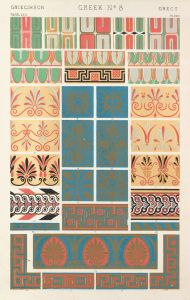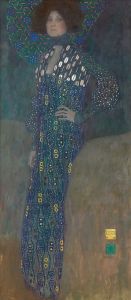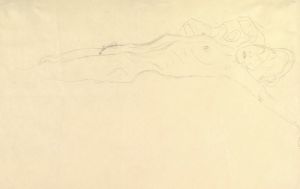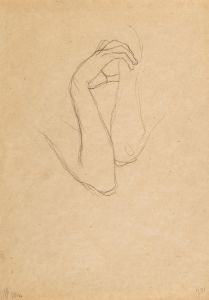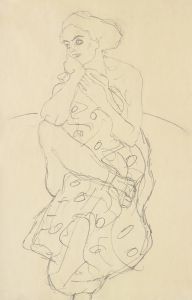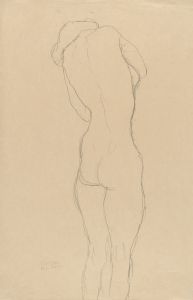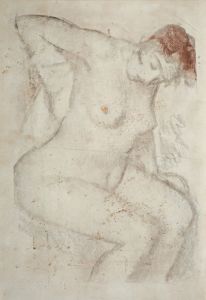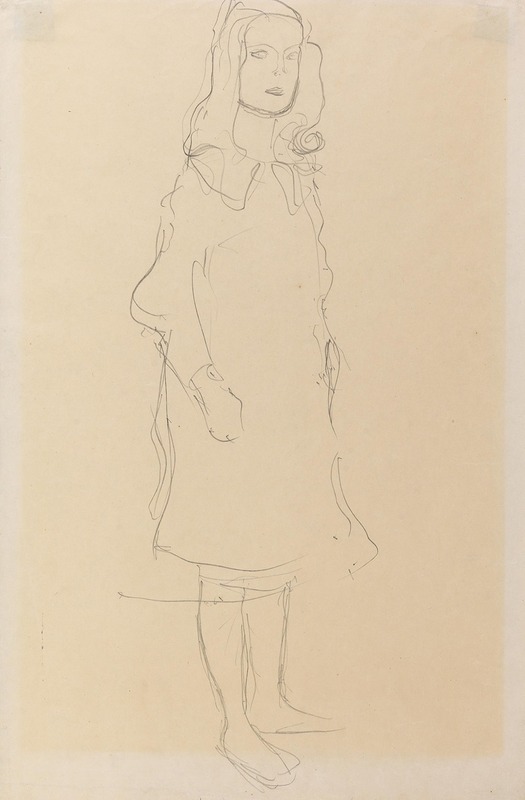
Mäda Primavesi, with coat, standing
A hand-painted replica of Gustav Klimt’s masterpiece Mäda Primavesi, with coat, standing, meticulously crafted by professional artists to capture the true essence of the original. Each piece is created with museum-quality canvas and rare mineral pigments, carefully painted by experienced artists with delicate brushstrokes and rich, layered colors to perfectly recreate the texture of the original artwork. Unlike machine-printed reproductions, this hand-painted version brings the painting to life, infused with the artist’s emotions and skill in every stroke. Whether for personal collection or home decoration, it instantly elevates the artistic atmosphere of any space.
Gustav Klimt, an Austrian symbolist painter, is renowned for his distinctive style that combines symbolic subject matter with elaborate decorative elements. One of his notable works is the portrait of Mäda Primavesi, a young girl from a wealthy Viennese family. This painting, completed in 1912, is a testament to Klimt's skill in capturing the essence of his subjects while incorporating his signature ornamental style.
Mäda Primavesi was the daughter of Otto Primavesi, a banker and industrialist, and Eugenia Primavesi, who were prominent patrons of the arts in Vienna. The Primavesi family was part of the affluent bourgeoisie, and they supported many artists of the Vienna Secession, a movement that Klimt was instrumental in founding. The portrait of Mäda was commissioned by her parents, reflecting their admiration for Klimt's work and their desire to capture their daughter's likeness in his unique style.
In the painting, Mäda is depicted standing, wearing a coat that is richly decorated with floral patterns. The background of the painting is equally ornate, filled with vibrant colors and intricate designs that are characteristic of Klimt's work during this period. The use of color and pattern in the painting not only highlights Mäda's youthful innocence but also emphasizes the luxurious lifestyle of the Primavesi family.
Klimt's approach to portraiture often involved a blend of realism and abstraction. In Mäda Primavesi's portrait, her face and hands are rendered with a high degree of realism, capturing her youthful features and expression. In contrast, the rest of the painting, including her clothing and the background, is more stylized and abstract, showcasing Klimt's fascination with decorative art and his ability to merge it with traditional portraiture.
The painting is notable for its vibrant palette and the way Klimt uses color to convey emotion and character. The bright hues and intricate patterns create a sense of movement and life, drawing the viewer's attention to Mäda's presence. This use of color and pattern is a hallmark of Klimt's work and is evident in many of his other portraits and landscapes.
Mäda Primavesi's portrait is housed in the Metropolitan Museum of Art in New York City, where it continues to be admired by art enthusiasts and scholars alike. It is considered one of Klimt's masterpieces and is a prime example of his ability to blend the decorative with the personal, creating a work that is both visually stunning and deeply intimate.
The painting not only reflects Klimt's artistic style but also provides insight into the cultural and social milieu of early 20th-century Vienna. The Primavesi family, like many others in their social circle, played a significant role in supporting the arts and fostering the careers of artists like Klimt. Through this portrait, viewers can glimpse the intersection of art, society, and personal identity that characterized this vibrant period in Viennese history.
Overall, the portrait of Mäda Primavesi stands as a testament to Gustav Klimt's artistic genius and his ability to capture the essence of his subjects while pushing the boundaries of traditional portraiture. It remains a cherished piece within the art community and continues to inspire admiration for its beauty and craftsmanship.





